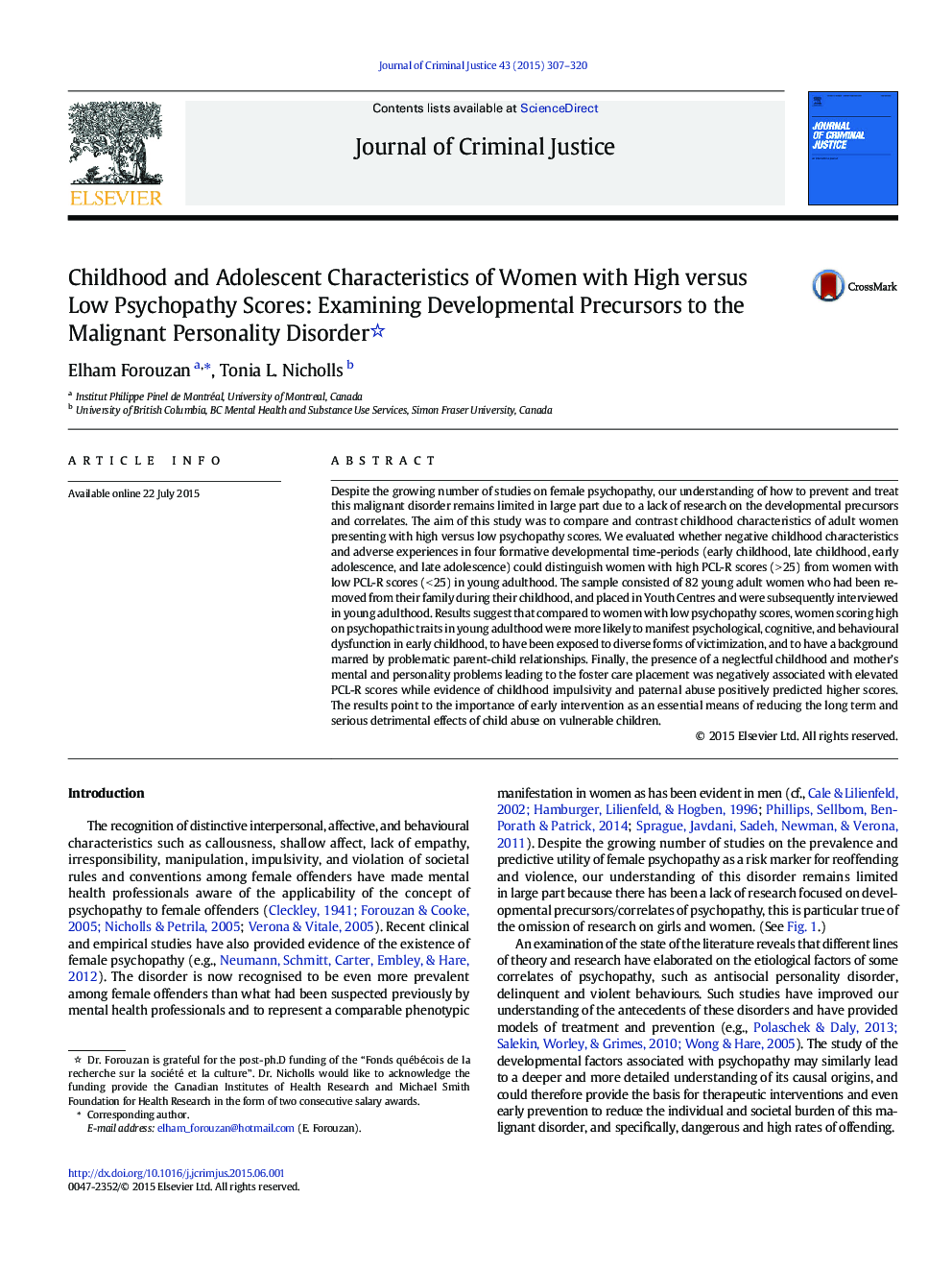| کد مقاله | کد نشریه | سال انتشار | مقاله انگلیسی | نسخه تمام متن |
|---|---|---|---|---|
| 882733 | 912017 | 2015 | 14 صفحه PDF | دانلود رایگان |
Despite the growing number of studies on female psychopathy, our understanding of how to prevent and treat this malignant disorder remains limited in large part due to a lack of research on the developmental precursors and correlates. The aim of this study was to compare and contrast childhood characteristics of adult women presenting with high versus low psychopathy scores. We evaluated whether negative childhood characteristics and adverse experiences in four formative developmental time-periods (early childhood, late childhood, early adolescence, and late adolescence) could distinguish women with high PCL-R scores (> 25) from women with low PCL-R scores (< 25) in young adulthood. The sample consisted of 82 young adult women who had been removed from their family during their childhood, and placed in Youth Centres and were subsequently interviewed in young adulthood. Results suggest that compared to women with low psychopathy scores, women scoring high on psychopathic traits in young adulthood were more likely to manifest psychological, cognitive, and behavioural dysfunction in early childhood, to have been exposed to diverse forms of victimization, and to have a background marred by problematic parent-child relationships. Finally, the presence of a neglectful childhood and mother’s mental and personality problems leading to the foster care placement was negatively associated with elevated PCL-R scores while evidence of childhood impulsivity and paternal abuse positively predicted higher scores. The results point to the importance of early intervention as an essential means of reducing the long term and serious detrimental effects of child abuse on vulnerable children.
Journal: Journal of Criminal Justice - Volume 43, Issue 4, July–August 2015, Pages 307–320
